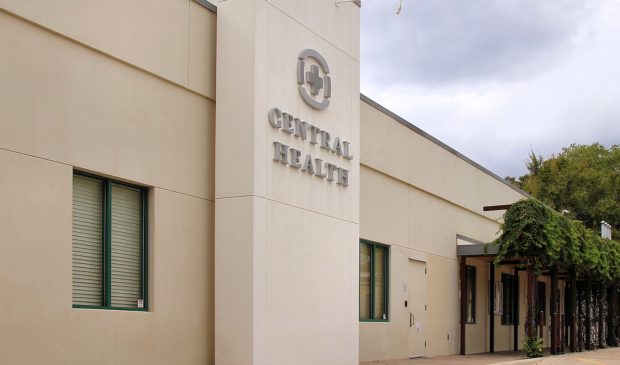City, Central Health eye partnership for homeless respite care facility
Monday, October 10, 2022 by
Chad Swiatecki The city may soon begin talks with Central Health and homelessness service providers focused on creating a permanent health care facility to aid those experiencing homelessness in recovering from significant illnesses and injuries.
The state of respite care for the homeless was the only agenda item for last week’s meeting of the Public Health Committee, which has heavily addressed the issue of homelessness over its last several sessions. The presentation from Central Health officials, who provide health care and related services to vulnerable populations in Travis County, addressed how the organization is planning its service delivery priorities for the next seven to 10 years.
A more comprehensive approach to respite care is one of the needs included in that planning. Alan Schalscha, Central Health’s chief medical officer, said the 30 to 50 respite beds needed for the area far exceed the 10 that are currently available through various medical facilities.
In examining local health care demographics, Central Health found that the greatest concentrations of poverty were located immediately east and west of Interstate 35 through the city, with 18 percent of the total poverty population located in the Rundberg area. That data is relevant to Central Health’s planning because people living in poverty are the most likely to need respite and other health care interventions.
Monica Crowley, Central Health’s chief strategy and planning officer, said the organization is continuing its outreach to the community and health care professionals and expects to have a clearer picture of its next facilities and funding needs within six months.
“As we continue to develop that plan … we should have a stronger and clearer timeline for when we might be able to invest in a facility, know how much it’s going to cost, and what additional resources we might need,” she said. “You do interviews with people working in the community and with staff for these kinds of planning efforts and respite care continues to rise to the top.”
Council Member Ann Kitchen said talks should begin soon between the city’s homelessness services staff and other organizations about how to provide a facility for respite care for the homeless, with existing bridge shelter locations as one option.
“It’d be interesting to have conversations about partnerships with the city in terms of facilities,” she said. “Would there be a potential for a partnership where Central Health contributes the dollar amounts necessary for the medical care, and the actual bricks and mortar is something that the city would contribute? It sounds like one of your challenges is what kind of facility you would need, and exploring partnerships with the city would be useful.”
Kitchen and Council Member Kathie Tovo at several points stressed the importance of having respite care providers open case management services with area homelessness service organizations to increase the chances of patients having shelter or permanent housing available to them after they are discharged from a medical facility.
Kitchen also expressed frustration that respite care is still being done in a piecemeal manner throughout the city despite pilot programs and other initiatives launched more than a decade ago.
“There was a program that was operated and it never got very far, and so I’m sure you’re looking to understand why that program didn’t continue. I suspect one of the barriers had to do with where to locate it,” she said.
Mike Geeslin, CEO and president of Central Health, said local leaders want to identify all the components of care needed for respite and other far-reaching services, to avoid “selling a ticket for an airplane but you don’t have a full crew.”
“There’s a lot of opportunities when it comes to programs and ordinances and other affected programs if we got a health and wellness center we’re constructing in the ETJ,” he said. “Looking through the lens of the other providers and partners out there … is there something we can bring forward before Council to accelerate getting into a physical space? We’d have to make sure (the building) was in pace with the programs.”
Photo by Larry D. Moore, CC BY-SA 4.0, via Wikimedia Commons.
The Austin Monitor’s work is made possible by donations from the community. Though our reporting covers donors from time to time, we are careful to keep business and editorial efforts separate while maintaining transparency. A complete list of donors is available here, and our code of ethics is explained here.
You're a community leader
And we’re honored you look to us for serious, in-depth news. You know a strong community needs local and dedicated watchdog reporting. We’re here for you and that won’t change. Now will you take the powerful next step and support our nonprofit news organization?



